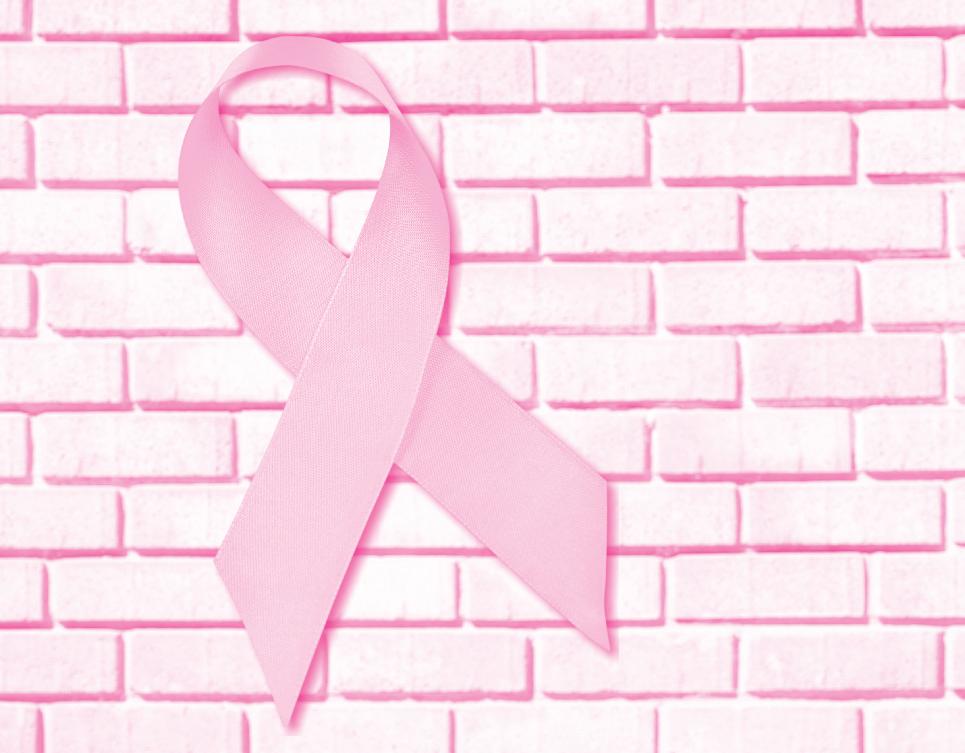

What’s Inside
Breast Cancer FAQ








The World Health Organization reports that roughly 2.3 million women were diagnosed with breast cancer in 2020. By the end of that year, there were nearly eight million women alive who had been diagnosed with the disease in the previous half decade.


A breast cancer diagnosis inevitably leads to questions about the disease. The bulk of those questions undoubtedly are asked by the millions of women who are diagnosed with breast cancer. But millions more individuals, including friends and family members of recently diagnosed women, may have their own questions. Women can discuss the specifics of their diagnosis with their physicians. In the meantime, the following are some frequently asked questions and answers that can help anyone better understand this potentially deadly disease.
WHAT IS BREAST CANCER?
Cancer is a disease marked by the abnormal growth of cells that invade healthy cells in the body. Breast cancer is a form of the disease that begins in the cells of the breast. The National Breast Cancer Foundation notes that the cancer can then invade surrounding tissues or spread to other areas of the body.


CAN EXERCISE HELP TO REDUCE MY BREAST CANCER RISK?
The NBCF notes that exercise strengthens the immune system and women who commit to as little as three hours of physical activity per week can begin to reduce their risk for breast cancer. However, even routine exercise does not completely eliminate a woman’s risk of developing breast cancer.

IS THERE A LINK BETWEEN DIET AND BREAST CANCER?
The organization Susan G. Komen¨, a nonprofit source of funding for the fight against breast cancer, reports that studies have shown eating fruits and vegetables may be linked to a lower risk for breast cancer, while consuming alcohol is linked to an increased risk for the disease. In addition, the NBCF reports that a high-fat diet increases breast cancer risk because fat triggers estrogen production that can fuel tumor growth.


IS THERE A LINK BETWEEN ORAL CONTRACEPTIVES AND BREAST CANCER?
The NBCF reports that women who have been using birth control pills for more than five years are at an increased risk of developing breast cancer. However, the organization notes that risk is very small because modern birth control pills contain low amounts of hormones.
CAN BREASTFEEDING REDUCE BREAST CANCER RISK?
Breastfeeding and breast cancer are linked, though the NBCF notes that the role breastfeeding plays in lowering cancer risk depends on how long a woman breastfeeds. The World Cancer Research Fund International notes that evidence indicates that the greater number of months women continue breastfeeding, the greater the protection they have against breast cancer.
IS THERE A CONNECTION BETWEEN STRESS AND BREAST CANCER?
The NBCF notes that researchers have found that traumatic events and losses can alter how the immune system functions, which can provide an opportunity for cancer cells to establish themselves within a person’s body. The NBCF urges women to identify ways to keep their stress levels in check.
Breast cancer education can be a valuable asset as women seek to reduce their risk for the disease.
What to know about breast lumps
Metro Creative


Breast cancer is a cause for concern for millions of women. Each year about 264,000 cases of breast cancer are diagnosed in women in the United States, according to the Centers for Disease Control and Prevention. The Canadian Cancer Society indicates around 28,600 Canadian women will be diagnosed with breast cancer this year. Globally, data from the World Health Organization indicates roughly 2.3 million women were diagnosed with breast cancer in 2020.



One of the more notable symptoms of breast cancer is the presence of a lump in the breast. Though not all lumps are malignant, it’s important that women learn about breast anatomy and lumps as part of their preventive health care routines.

Mount Sinai says that breast lumps can occur at any age in both men and women. Hormonal changes can cause breast enlargement and lumps during puberty, and boys and girls may even be born with lumps from the estrogen received from their mothers.


It is important to note that the vast majority of breast lumps are benign. The National Institutes of Health says 60 to 80 percent of all breast lumps are non-cancerous. The most common causes of breast lumps are fibroadenomas and fibrocystic changes. Fibroademomas are small, smooth, moveable, painless round lumps that


usually affect women who are at an age to have children, indicates the Merck Manual. They are non-cancerous and feel rubbery.

Fibrocystic changes are painful, lumpy breasts. This benign condition does not increase a woman’s risk for breast cancer. Symptoms often are worse right before one’s menstrual period, and then improve after the period begins.
Additional factors can contribute to the formation of lumps. Breast cysts are fluid-filled sacs that likely go away on their own or may be aspirated to relieve pain. Complex cysts may need to be removed surgically. Sometimes cysts also may form in milk ducts throughout the breasts.
Lumps also may be the result of injury. Blood can collect under the skin and form a type of lump called a hematoma. Other lumps may be traced to lipomas, which is a collection of fatty tissue or breast abscesses, which typically occur if a person is breastfeeding or has recently given birth.

Additional causes of lumps can be discussed with a doctor. Though the majority of lumps are not a cause for concern, it is important for people to regularly feel their breasts to check for abnormalities. Doctors may recommend annual mammograms to women age 40 and older. In its earliest stages, breast cancer may produce little to no visible symptoms, but a mammogram may be able to catch something early on.



















MITCHELL — The month of October is Breast Cancer Awareness month. In all likelihood, you probably know someone who has fought it, whether a friend or family member, or coworker. Maybe you’re wondering, how can I get out there and show support?








Coming up this month are a couple of events to raise money for breast cancer screening treatments and other Avera operations designed to help patients, according to Molly Sutton, regional director of philanthropy at the Avera Queen of Peace Hospital in Mitchell.




“We Care, Pink Hair” is a fun one. Hosted from 1 to 3 p.m. on Oct. 10 at the Avera Cancer Institute in Mitchell, people can inject a bit of color into showing their support, stopping in to get a pink hair extension woven into their hair by stylists from Hollywood Style, costing $10.

“It’s a very fun time for our patients and their families — and the people in their support systems,” Sutton said. “We love working with (Hollywood Style). We’ve been partnering with them for a really long time, they’re very supportive of our cancer center and our patients.”
Besides going toward screening fees, the money will also go toward funding for Avera’s 24/7 call center, where patients can call in to ask any questions they may have.

“Covering those costs for our patients takes some of that burden off of them, especially when there’s so much more going on while going through cancer treatment,” Sutton said. “We want to help them in the sense of a whole person experience — really caring for both their condition and their body, but also their mind and their spirit.”
There’s also a couple volleyball events hosted around the area that raise money for breast cancer; Volley for a Cure is happening in Wessington Springs on Oct. 12, as well as another in Parkston, too, Sutton said.
Avera also helps people in rural areas with transportation to and from treatment. Oftentimes the high frequency of treatment can make it hard for people, who may live far away from the nearest treatment center.
“If you’re going to radiation, you could be going every day, for weeks. Because we live in a very rural area, it can be really hard when you’re driving back and forth. If you don’t live in Mitchell, or even if you live in Mitchell and you’re driving to work somewhere else, getting to your appointments can be a struggle,” she said.
It’s these details that make a difference in making sure patients feel cared for, she said. By working with patients, the goal is to provide services like transport — or dietary help, which they do as well — that meet the person’s individual needs.
“It really is about individual patient care, about looking at individual needs. That concept of whole person care — of really taking care of that whole person during treatment — is really, really important.” ⊳
What cancer does to the body
Metro Creative Cancer affects tens of millions of people each year. The World Health Organization said cancer accounted for nearly 10 million deaths in 2020, the most recent year for data.


Depending on where cancer strikes, various symptoms may present. However, cancer also affects the body as a whole. Here is a more in-depth look at how cancer affects the body and overall health.
► WEIGHT LOSS: According to a 2011 article in the Journal of Genetics, weight loss occurs in up to 80 percent of people with cancer. Lost mass occurs in both muscle and fat tissue. Cancer may suppress the appetite and cause alterations in biochemical pathways for the production of proteins and other compounds necessary to maintain a healthy body weight and muscle composition.



► BLOOD CELL NUMBERS: Some cancers and cancer treatments can change the number of blood cells circulating in the blood, according to Cancer Research UK. White blood cell numbers
may drop and risk of infection may increase. Cancer treatments may cause low levels of red blood cells, resulting in anemia, which can make a person feel tired and breathless and require a blood transfusion.
► DECREASED INFECTION RESISTANCE: Some mutations caused by cancer give cancer cells the ability to reduce or even cripple immune response, according to Healthfully. Therefore, the immune system becomes limited in its ability to recognize foreign organisms. Viruses and bacteria may take hold. This is why many people who have cancer may ultimately die from pneumonia.


► HORMONAL CHANGES: Some cancers can produce hormones that will circulate and cause symptoms known as paraneoplastic syndrome. It may cause muscle weakness or even change the balance of salt and water in the body. Hormone therapies may be used in cancer treatments to help address the symptoms caused by the cancer.

► CONSTIPATION: Pain medications and chemotherapy can cause constipation. It’s important to drink plenty of liquids and eat high-fiber diets to help combat this problem.

► FATIGUE: Along with weight loss, fatigue is another common body effect of cancer. Preserving energy by napping and resting, especially during treatment, can help.
► EYE CHANGES: Chemotherapy can increase the risk of dry eye syndrome and the formation of cataracts, says OSHU Knight Cancer Institute. Additional vision problems may occur as well.
► PREMATURE AGING: Both cancer and the necessary treatments can speed up some signs of aging. For example, it may increase the risk of osteoporosis or bring on early menopause.

Cancer doesn’t just affect the area of the body where it’s located. The entire body can be affected by cancer and cancer treatments.





Four ways to cut cancer risk
Metro Creative





Cancer affects lives in every corner of the globe. Whether it’s encountered as a patient,






What is cancer?


According to the National Cancer Institute, cancer is a disease in which cells in the body grow uncontrollably and spread to other parts of the body. Cancer can start just about anywhere, as humans are made up of trillions of cells. When a person has cancer, abnormal or damaged cells grow and multiply when they normally should die and have new, healthy cells take their place.
Cancer cells differ from normal cells in that they don’t need signaling to grow, nor do they stop multiplying. They also do not stop growing when encountering other cells and can hide from the immune system. All of these conditions and others combine to make cancer a very serious condition. That means it could be of the utmost importance to do everything possible to reduce your risk of acquiring the disease. Though there’s no guaranteed way to avoid cancer, these four strategies are highly effective at reducing risk for the disease.
caregiver or supporter, cancer will affect the vast majority of individuals at some point in their lives. That prevalence underscores the


1 Healthy eating
Consuming a healthy diet can go a long way toward reducing cancer risk. The Mayo Clinic says people should eat plenty of fruits and vegetables, and even choose foods from plant sources as the foundation of their diets. Limiting refined sugars and fats from animal sources also is effective.
Eating processed meat also has been linked to an increased risk of certain types of cancer, according to the World Health Organization. Consumption of alcohol also increases cancer risk.
3 Maintain a healthy weight
The CDC says being overweight or obese has been linked to a higher risk of 13 different types of cancer. Diet is important in maintaining a healthy weight, but so is regular physical exercise. People should strive for at least 150 minutes a week of moderate aerobic activity or a minimum of 75 minutes a week of intense aerobic activity.


significance of learning about the disease, including ways to reduce the risk of being diagnosed.
2 Quit tobacco
Lung cancer is the leading cause of cancer death, says the Centers for Disease Control and Prevention. Smoking cigarettes is the number one risk factor for lung cancer, with about 80 to 90 percent of lung cancer deaths attributed to cigarettes in the United States. Tobacco also causes cancer elsewhere in the body. The single best way to reduce cancer risk is to avoid tobacco to begin with or, for current smokers, to quit smoking immediately.
4 Protect skin from the sun
Skin cancer is one of the most common forms of the disease. Covering the skin, avoiding midday sun, using a broad-spectrum sunscreen with an SPF of at least 30 every day, and avoiding sunlamps and tanning beds is essential. While there is no completely foolproof way to prevent cancer, there are many ways to reduce risk for the disease.
FAQ about hospice care


Metro Creative


Care and comfort are vital components of tending to a loved one with a serious illness. That’s especially so when individuals who are ill are approaching the end of their lives.
When an aging family member is nearing the end of his or her life, many families rely on hospice care to provide a level of care and comfort that ensures the person’s final days are less challenging than they might otherwise be. Families who have never before had to rely on hospice care may have some common questions, which the National Institute on Aging has answered in order to simplify this sometimes challenging period in the life of aging individuals and their families.
WHAT IS HOSPICE CARE?
The NIA notes that hospice care is for people with serious illnesses who choose to cease or continue treatment. That’s an important distinction, as a misconception regarding hospice care is that it’s reserved for people who have stopped receiving treatment for their illness.
WHERE DO PEOPLE RECEIVE HOSPICE CARE?
Another misconception regarding hospice care is that it’s provided exclusively at facilities that specialize in hospice services. Though the NIA notes nursing homes, assisted living facilities and even hospitals may provide hospice care, it’s also possible for individuals to receive such
care at home. Receiving hospice care at home is a significant benefit for many aging individuals who prefer the creature comforts of their own homes to the settings at hospitals and other facilities. Though facilities that specialize in providing hospice care often go to great lengths to establish peaceful, comfortable settings, many families like having the option that allows an aging relative to receive hospice care at home, where they might be able to enjoy more frequent visits from loved ones.
WHICH SERVICES ARE INCLUDED IN HOSPICE CARE?
The NIA notes that an assortment of services fall under the umbrella of hospice care. Pain relief, physical or occupational therapy, emotional
and spiritual support, and advance care planning are some of the services noted by the NIA that are typically offered as hospice care. Families are encouraged to discuss specific services their loved one may need with their loved one’s physician. That information can then be used to find the right hospice care arrangement.







ARE MEDICATIONS STOPPED UPON ENTERING HOSPICE?



The NIA indicates that medication to cure or control a serious illness will stop when a person enters hospice care. For example, a cancer patient will no longer receive chemotherapy after entering hospice care. However, medications to treat conditions or symptoms unrelated to a person’s illness can continue to be administered.

IS HOSPICE CARE 24/7?
The NIA notes that hospice care is rarely a round-the-clock service. Though a hospice care team member may be available at all hours, the NIA indicates that most of the of the dayto-day care is provided by family and friends. However, families considering a facility outside an individual’s home are encouraged to ask questions regarding round-the-clock care. Hospice care can help aging individuals live comfortably as they approach the end of their lives. More information about hospice care can be found at nia.nih.gov.
What men should know about prostate cancer



The digital age has dominated twentyfirst century life and transformed how people live. Access to information pertaining to just about any topic is now never more than a quick smartphone search away. That’s made information more readily available, but it’s also led some to believe there’s simply too much data to process at times.



It’s undeniable that many things are now around to compete for individuals’ attention, and it’s no small task to determine what does and doesn’t merit consideration. Health-conscious adults recognize the importance of staying on top of health-related issues, and that may involve educating oneself about certain diseases with the hope of understanding and reducing individual risk.



For men, recognition of some important facts about prostate cancer can help them better understand a disease that the World Cancer Research Fund International reports is the second most commonly occurring cancer in men.
► The Prostate Cancer Foundation and the Canadian Cancer Foundation report that one in eight men in the United States and Canada will be diagnosed with prostate cancer in his lifetime.


► Men are more likely to develop prostate cancer than they are melanoma and cancers of the colon, kidney and stomach combined.


► The PCF estimates that more than three million men in the U.S. are currently living with prostate cancer.








► The CCS estimates that 67 Canadian men will be diagnosed with prostate cancer every day.
► The risk for prostate cancer increases considerably as men age. According to the PCF, roughly 60 percent of prostate cancer cases are found in men over the age of 65.
► Men who have a father, brother or son who has been diagnosed with prostate cancer could be twice as likely to develop the disease as those without such a connection.
► The CCS reports the five-year survival rate for prostate cancer among men in Canada was 91 percent in 2022. By contrast, the five-year
survival rate for all cancers in the same year was 62 percent. The American Cancer Society reports that the five-year survival rate for prostate cancer in the U.S. was 97 percent between 2012 and 2018.









► The PCF notes that prostate cancer often produces no symptoms, which underscores the significance of prostate cancer examinations. The ACS reports that the prostate-specific antigen (PSA) blood test is used mainly to screen for prostate cancer in men without symptoms. Men are urged to speak with their physicians about testing for the disease, even if they are symptom-free. The ACS indicates such a discussion for men who are at average risk for the disease should occur at age 50, while the MD Anderson Cancer recommends men open a dialogue with their physicians beginning at age 40.
Prostate cancer is a common yet treatable disease. Men are urged to educate themselves about prostate cancer and discuss prevention with their physicians.
Risk factors for thyroid cancer


Metro Creative








The International Agency for Research on Cancer reports that roughly 586,000 new cases of thyroid cancer were diagnosed across the globe in 2020. That made thyroid cancer the ninth most commonly diagnosed cancer in the world, with more new diagnoses than melanoma of the skin, cancer of the ovaries and pancreatic cancer. Thankfully, IARC data indicates thyroid cancer deaths across the globe were relatively low compared to the number of new cases in 2020, a fact that underscores how effective awareness of the disease can be in preventing negative health outcomes.

Measures to reduce cancer risk can never guarantee a person will not ultimately be diagnosed with the disease. However, recognition of risk factors may compel people to avoid certain behaviors that can exacerbate existing risks. Such recognition also may encourage individuals to keep a more watchful eye on their bodies, a vigilance that could compel them to report issues earlier than they otherwise might, thus increasing the chances of successful treatment should they receive a cancer diagnosis. With that in mind, individuals can study these risk factors for thyroid cancer, which the Memorial Sloan
Kettering Cancer Center notes differ depending on the type of the disease.



PAPILLARY THYROID CANCER
The MSKCC reports that most cases of thyroid cancer are papillary thyroid cancer. Papillary thyroid cancer is characterized by a slow-growing tumor that typically begins in one lobe of the thyroid. Risk factors include:
► Radiation exposure: Individuals exposed to radiation as children have a higher chance of developing papillary thyroid cancer.

► Inherited conditions: A family history of multiple colon growths is considered a risk factor for papillary thyroid cancer. Similarly, the MSKCC reports that roughly 5 percent of people with papillary thyroid cancer have family members with the disease, though researchers are still working to identify which gene is responsible for this link.
► Gender: Papillary cancer occurs roughly three times more often in women than in men.





































































































However, the tumor grows and spreads more rapidly in men than in women.











FOLLICULAR THYROID CANCER
This is a slow-growing form of thyroid
cancer that can often be cured with the correct treatment. Risk factors include: Low-iodine diet: Follicular carcinoma is more likely to develop in places where iodine is not added to the salt used in food.
► Familial conditions: The MSKCC reports that follicular thyroid cancer is part of certain inherited disorders, including Werner’s syndrome.
MEDULLARY THYROID CANCER

According to the MSKCC, medullary thyroid cancer appears in older adults. Risk factors include:
► Family history: Roughly one in four individuals diagnosed with medullary thyroid cancer have inherited a mutation in the RET gene.
The Cancer Treatment Centers of America reports that the five-year survival rate for localized thyroid cancer is roughly 99.9 percent. Individuals who recognize their own risk factors for the disease will put themselves in a strong position to overcome it should they ever be diagnosed. More information is available at mskcc.org.

Warning signs of cancer in pets
Metro Creative



Few people may think of their pets when pondering a topic as serious as cancer. However, a significant percentage of cats and dogs will develop cancer at some point in their lives. Recognition of that reality on the part of pet owners could potentially save the lives of untold numbers of furry friends.
The National Cancer Institute reports that approximately six million dogs and roughly the same number of cats are diagnosed with cancer each year in the United States. In fact, data from the Veterinary Cancer Society indicates cancer is the leading cause of death in pets who are beyond middle age. Much like with humans and cancer, pets have a greater chance of surviving a cancer diagnosis if the disease is detected in its early stages. Unlike with humans, pets cannot speak up when something is off with their bodies. That means it’s the responsibility of pet owners to learn to recognize potential pet cancer warning signs. The nonprofit, New York Citybased Animal Medical Center urges pet owners to be on the lookout for the following cancer warning signs and to report anything concerning to a veterinarian immediately.
► Lumps and bumps: The AMC encourages pet owners to have any skin mass examined by a veterinarian and to maintain a body map of lumps so new lumps are more easily recognized. The AMC reports that skin masses in cats are more likely to be malignant than those in dogs.




► Abnormal odors: Notably bad breath could be caused by a tumor in the mouth. Foul odors also may be a result of bacteria related to an infection or wound related to cancer.

► Abnormal discharge: An increased discharge from the pet’s nose, eyes or ears could indicate the presence of a tumor or another illness.
► Wounds that will not heal: Wounds that won’t heal on their own or with prescribed medications could indicate the presence of cancer.


► Weight loss: Unexplained weight loss should be brought to the attention of a veterinarian. The AMC urges owners of pets who are overweight to avoid welcoming unexplained weight loss without consulting with a veterinarian. Unless a pet is on a diet, it is unlikely to lose weight.
► Changes in appetite: The AMC recommends pet owners monitor how much their pets eat, as

an increase or decrease in appetite could indicate the presence of cancer.



► Coughing or difficulty breathing: Changes in a pet’s breathing pattern or a reluctance to exercise should be brought to the attention of a veterinarian. Cancer can affect a pet’s breathing in a number of ways, so these signs should not be taken lightly.
► Lethargy and depression: Lack of interest in daily activities, including walks and play sessions, could indicate the presence of cancer. In addition, cancer can increase the amount of time pets spend sleeping.
► Changes in bathroom habits: The AMC notes that excessive water consumption, blood in the urine, difficulty urinating or defecating, frequent diarrhea, or blood in the stool may indicate the presence of cancer.



► Pain: Pain may be linked to various ailments, including cancer. If a pet is limping, have the animal examined by a veterinarian to determine the cause of the limp.
Cancer affects millions of pets each year. Responsible pet owners can learn to spot potential warning signs of cancer to increase the chances their furry friends survive the disease.

PINK







